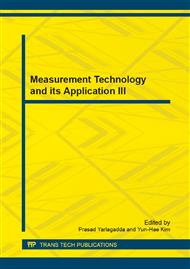p.50
p.55
p.59
p.65
p.71
p.76
p.82
p.90
p.96
Study of Optical Coherence Theory in Measurement
Abstract:
Light is a transverse electromagnetic wave, which has the volatility and particles. When light waves are added up in the spatial uniform medium, different conditions will produce interference effects in the meeting area. Optical path difference affects the distribution of the interference pattern directly, and the light interference pattern gives information of phase and amplitude in turn. Due to the measurement precision and extremely high sensitivity of response, the principle of optical coherence has been studied based on measuring the related physical quantity indirectly.
Info:
Periodical:
Pages:
71-75
Citation:
Online since:
June 2014
Authors:
Keywords:
Price:
Сopyright:
© 2014 Trans Tech Publications Ltd. All Rights Reserved
Share:
Citation:


